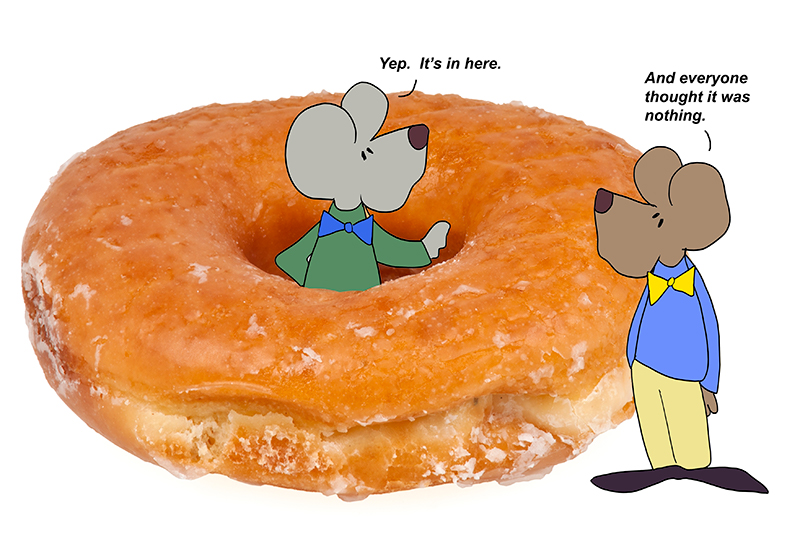Homer Simpson and stereotypical police officers share this common thread.
If we were playing Jeopardy, the answer would be
“What are donuts?”
I am not sure if it is National Donut Day or not, but July 9 is certainly a day for donut lovers. Sometimes, it is spelled doughnut, and then, of course, we see the shortened version, donut. It is a huge debate. But where did the name come from? The dough part makes sense. But what about the nut? Nuts are not a requisite for the snack. But that’s exactly what happened.
Fried dough was introduced to New York back when the area was known as New Amsterdam. Then, Dutch was the predominant language. And those early, early Americans called the treats “olykoeks,” translating to “oily cakes,” because the dough was quite literally fried in oil. The word ‘donut’ came soon after when a woman is said to have put nuts in the dough before frying it.
If she had added jelly, we’d have doughjellies today. Or anything, really.
But the story continues with the nut lady. She was a New England woman named Elizabeth Gregory. One day, she fried some dough to send with her son for his voyage at sea. And her son, Hanson Crockett Gregory, was the one who put a hole in the center, giving us the donut shape we know and love. He took his little satchel of donuts out to sea, and when he ate them, he skewered the donut through one of the spokes on the ship’s wheel. He did this to hold the donut while using both hands to steer the ship. Ahoy, there Matey.
I’m getting off track, though. Today should be Donut Day because, on July 9, 1872, the doughnut took a big step toward becoming the billion-dollar business it is today.
It was when John F. Blondel of Thomaston, Maine received a patent for a “new and useful” improvement in doughnut cutters. His little inventions would speed the production and consumption of good donuts all throughout the land.
The device was described in Patent No. 128,783. It automated the process of cutting doughnuts — holes and all — just like a hole punch. The desired edge could be plain or scalloped, inside and out.
Perhaps because of this, the donut industry has become what it is today. Over 10 billion donuts are made in the US every year. That’s 10 billion with a B. Hole-y Moley.
And Krispy Kreme was the very first donut chain. A chappie named Vernon Rudolph bought the secret recipe for the Krispy Kreme donut from a Frenchmen in New Orleans. It sounds shady, like striking a deal on Craig’s List. Vernon took that recipe to North Carolina, where Krispy Kreme Donuts was born. The shop first opened its doors on July 13, 1937, in Winston-Salem. Holes and all.
So, does the hole make the donut? I know, I know. Some donuts don’t have holes, and they normally have a prize inside that is hidden from sight. Which leads us once again to the topic.
Perhaps the things we can’t see are the best parts of all. Maybe the things we think are empty are the things with the most significant impact in our lives. Possibly.
Like donuts with their holes.
==========
“The possession of knowledge does not kill the sense of wonder and mystery. There is always more mystery.”
― Anais Nin
=========
“The world is full of obvious things which nobody by any chance ever observes.”
― Arthur Conan Doyle
==========
“The important thing is not to stop questioning. Curiosity has its own reason for existence. One cannot help but be in awe when he contemplates the mysteries of eternity, of life, of the marvelous structure of reality. It is enough if one tries merely to comprehend a little of this mystery each day.
— Albert Einstein
============
Hole in one, and many, many, many.
